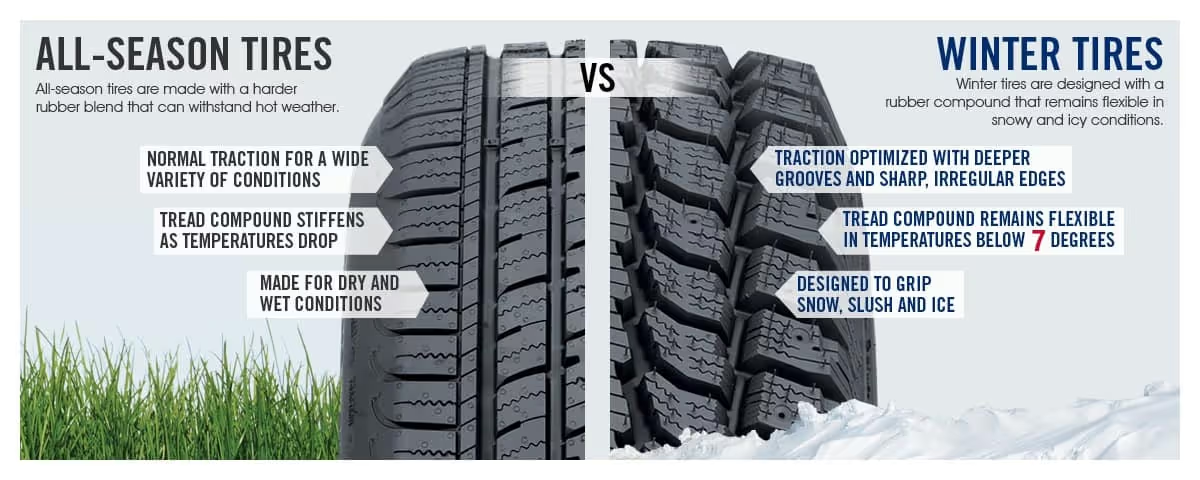Why Seasonal Tire Changes Are Essential for Safety and Performance
When the seasons shift, so should your tires. While it might seem like a minor detail, changing your tires according to the season is one of the simplest — and smartest — ways to protect yourself, your passengers, and your vehicle. Whether you’re facing the icy grip of winter or the sun-soaked pavement of summer, the right tires can make all the difference.

The Science Behind Seasonal Tires
Tires aren’t just black rubber rings — they’re highly engineered components designed to interact with the road under specific conditions.
Winter tires are made with softer rubber compounds that stay flexible in freezing temperatures, allowing them to grip snow, ice, and cold pavement better than their summer or all-season counterparts. Their tread patterns are designed to channel slush and snow away from the tire, reducing the risk of hydroplaning and helping maintain traction on slippery surfaces.
Summer tires, on the other hand, are optimized for warm conditions. Their rubber is harder, providing improved handling, braking, and stability on dry and wet roads when temperatures are high. Winter tires, if left on during the summer, wear out faster and significantly reduce handling performance.

Safety First
Seasonal tire changes are primarily about safety. Braking distances can increase dramatically if you use the wrong type of tire for the conditions — sometimes by several car lengths. That difference can be critical in an emergency situation.
Winter tires, for example, can reduce stopping distances on snowy or icy roads by as much as 30–40% compared to all-season or summer tires. That extra grip can be the deciding factor between a close call and a collision.

Protect Your Investment
Beyond safety, seasonal tire changes also extend the life of your tires. Using winter tires in the summer, or summer tires in the winter, will wear the rubber down much faster. Swapping at the right time can ensure each set lasts multiple seasons, saving you money over time.
Additionally, many insurance companies recognize the use of appropriate seasonal tires as a proactive safety measure, and some may even offer premium discounts or reduced deductibles.

When Should You Make the Switch?
A general rule of thumb is to switch to winter tires when the temperature consistently drops below 7°C (44°F) and back to summer or all-season tires when it rises above that mark in the spring. Even if there’s no snow on the ground, cold pavement alone is enough to reduce the effectiveness of non-winter tires.

Peace of Mind All Year Long
Driving is unpredictable enough — the last thing you want is to risk your safety or damage your vehicle because of the wrong tires. Investing in seasonal tire changes isn’t just about performance; it’s about preparing for whatever the road throws your way, all year long.




